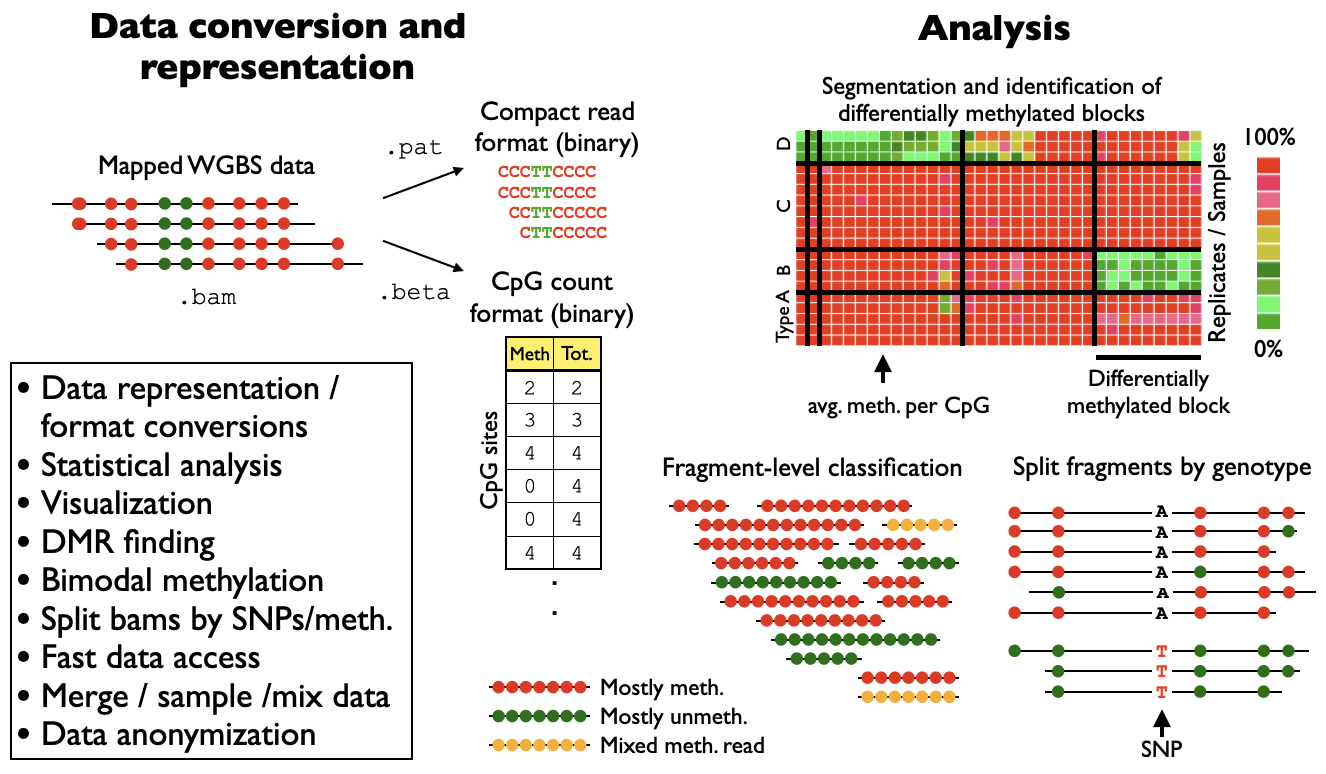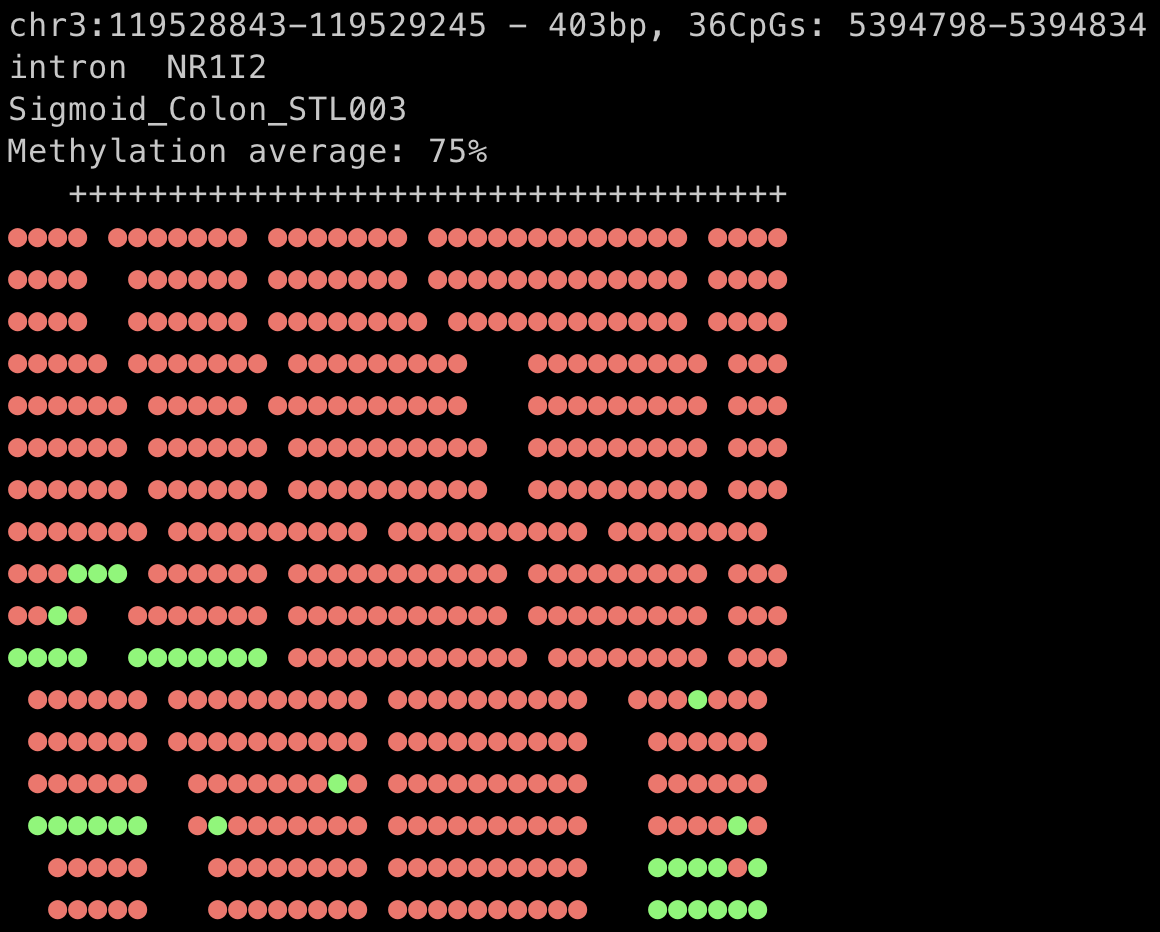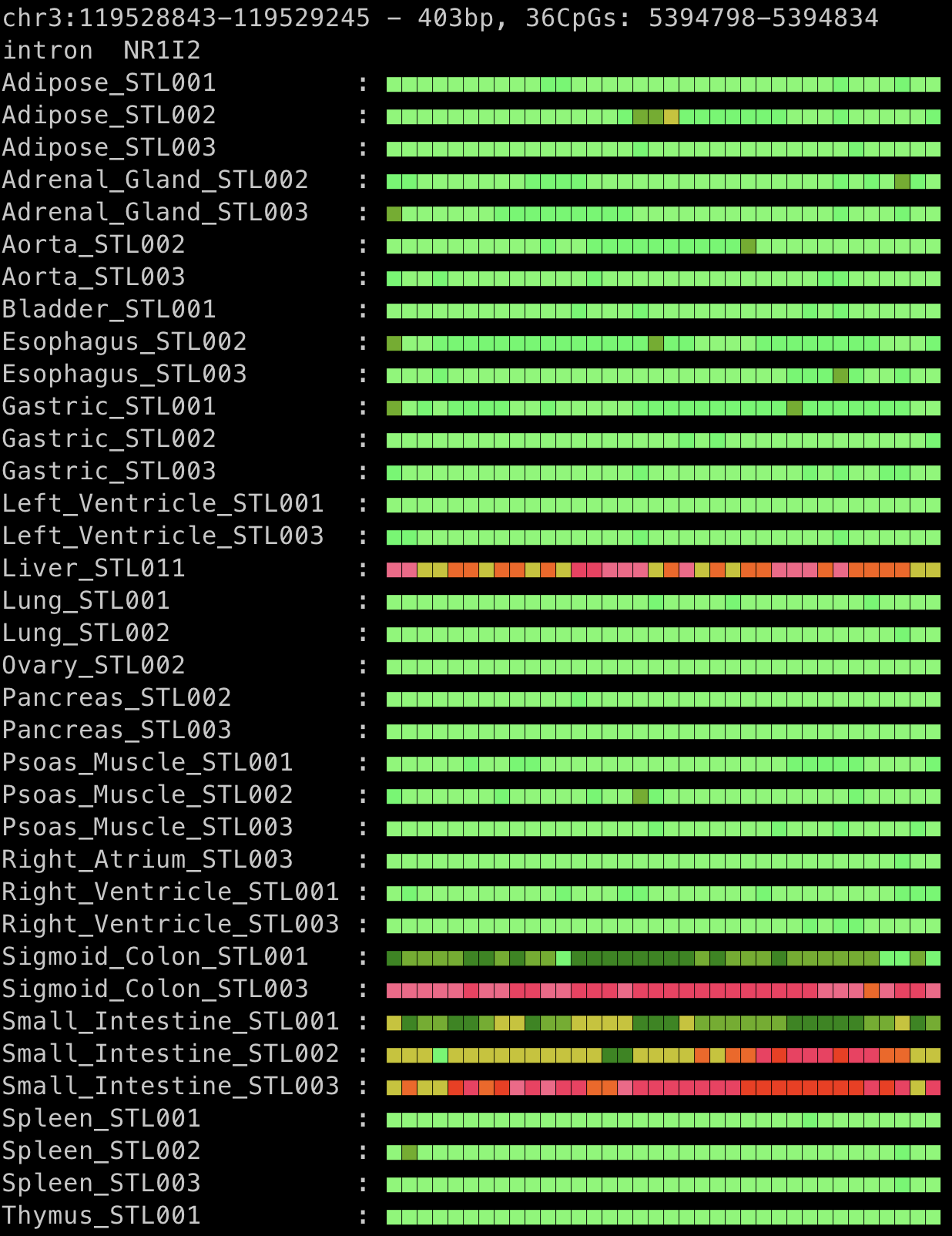wgbstools is an extensive computational suite tailored for bisulfite sequencing data. It allows fast access and ultra-compact representation of high-throughput data, as well as machine learning and statistical analysis, and informative visualizations, from fragment-level to locus-specific representations.
It converts data from standard formats (e.g., bam, bed) into tailored compact yet useful and intuitive formats (pat, beta). These can be visualized in terminal, or analyzed in different ways - subsample, merge, slice, mix, segment and more.
 This project is developed by Netanel Loyfer and Jonathan Rosenski in Prof. Tommy Kaplan's lab at the Hebrew University, Jerusalem, Israel.
This project is developed by Netanel Loyfer and Jonathan Rosenski in Prof. Tommy Kaplan's lab at the Hebrew University, Jerusalem, Israel.
# Clone
git clone https://github.com/nloyfer/wgbs_tools.git
cd wgbs_tools
# compile
python setup.pyAt least one reference genome must be configured (takes a few minutes).
wgbstools init_genome GENOME_NAME
# E.g,
wgbstools init_genome hg19
wgbstools init_genome mm9wgbstools downloads the requested reference FASTA file from the UCSC website.
If you prefer using your own reference FASTA, specify the path to the FASTA as follows.
wgbstools init_genome GENOME_NAME --fasta_path /path/to/genome.fa- python 3+, with libraries:
- pandas version 1.0+
- numpy
- scipy
- samtools
- tabix / bgzip
- bedtools
Now you can generate pat.gz and beta files out of bam files:
wgbstools bam2pat Sigmoid_Colon_STL003.bam
# output:
# Sigmoid_Colon_STL003.pat.gz
# Sigmoid_Colon_STL003.betaOnce you have pat and beta files, you can use wgbstools to visualize them. For example:
wgbstools vis Sigmoid_Colon_STL003.pat.gz -r chr3:119528843-119529245wgbstools vis *.beta -r chr3:119528843-119529245 --heatmapTo deconvolve tissues or blood samples, see our UXM software
If you are using wgbstools, please cite:
Loyfer et al. (2024) ‘wgbstools: A computational suite for DNA methylation sequencing data representation, visualization, and analysis’, bioRxiv ,2024.
[GEO GSE186458 | Genome browser sessions: hg19 | hg38]

